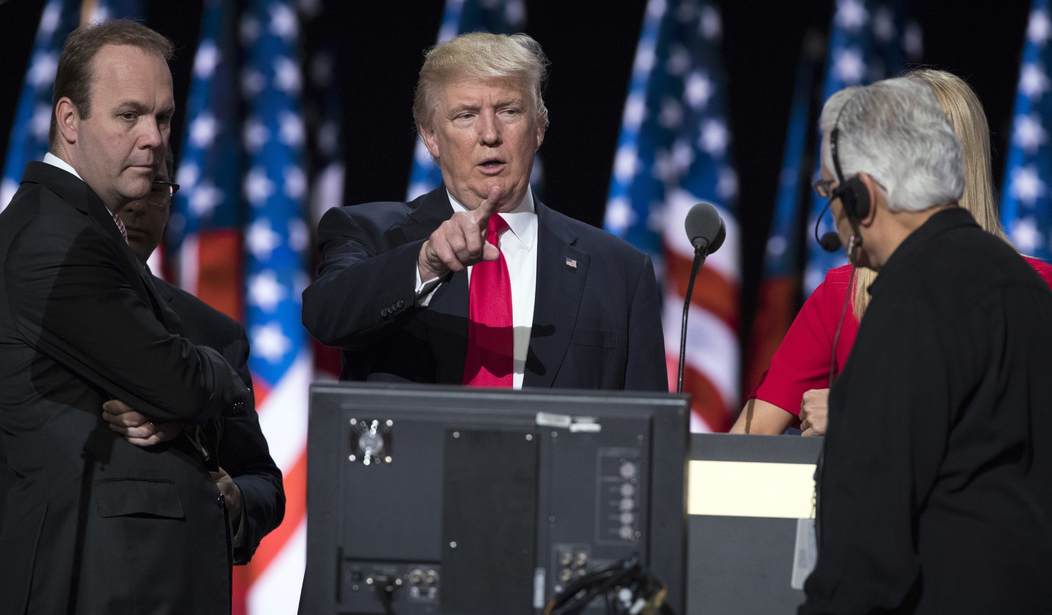The presidency of Donald Trump is a truly strange time in American politics. Democrats are trying to impeach a duly-elected first-term president for the first time in U.S. history. A deep state has frustrated that president, investigating his campaign before and after his inauguration. Republicans are celebrating Trump’s victory in getting judges appointed to federal courts — judges who will uphold the plain text of the Constitution, because so many previous judges have done the opposite. Congress keeps passing one “continuing resolution” after another in lieu of a budget.
Politics is driven by partisanship, gridlock, and mistrust. How did it come to this, and how can Americans push back?
Part of the problem is structural. In the late 1800s and early 1900s, intellectuals started to reject the basic structure of America’s Constitution and the Founding Fathers’ vision for government. Many thought a modern scientific bureaucracy should set the rules and regulations for society — and they thought that these scientific bureaucrats would be largely immune to political influence. If they were educated and trained to be scientific experts rather than partisans, the thinking went, these bureaucrats would be able to govern far better than democratically-elected representatives.
The Founders knew better, but the proud spirit of science and modernity led these thinkers to reject their wisdom.
The American left has adopted the progressive mantle in recent years, but in the early 1900s both Republicans and Democrats joined the movement. Progressivism, like the big-government movements in Russia (communism) and Italy (fascism), was hailed as the wave of the future, the marriage of science and technology to politics. Times were changing, and the Constitution seemed woefully out of date.
Yet progressivism went too far, too fast. President Woodrow Wilson used World War I as an excuse to grab unprecedented power, launching a program of “war socialism” complete with rationing and government control of industries. For a time, the technocracy was held in check under Presidents Warren Harding and Calvin Coolidge.
With the stock market crash of 1929, President Herbert Hoover — an engineer by training — attempted to use government to fix the economy. Franklin Roosevelt campaigned against this strategy, but when he entered office, he launched an even more ambitious slate of big government programs, the New Deal.
Many of the “alphabet soup” executive agencies around today date to the New Deal and Lyndon Johnson’s Great Society. In these reforms, Congress passed laws to create administrative agencies, effectively delegating its lawmaking authority to the executive branch. This created a slate of career bureaucrats who made regulations, unaccountable to the will of the people. Congress still has the authority to defund these agencies, but it does not do so. Regulatory agencies allow Congress to pass the blame for frustrating regulations to someone else.
Administrative agencies are not unreasonable, but it is unreasonable to assume that members of the federal bureaucracy are something other than normal human beings, with their own political views and preferences.
Notorious texts between FBI agent Peter Strzok and his paramour, FBI lawyer Lisa Page, revealed not only the level of anti-Trump bias at the FBI, but these agents’ desire to use their official government positions against a candidate and president they considered dangerous and unfit. Throughout the 2016 campaign (and even after Trump’s inauguration), the FBI used the counter-intelligence power of the federal government to spy on members of the Trump campaign on the flimsy assumption that Trump or his staff were in league with Russia.
This scandal — termed “spygate” — reveals that the Founders were right and the progressives were wrong: government bureaucrats can be just as partisan as elected officials. Last month, as Democrats moved to impeach President Trump following a “whistleblower” report from within the government itself, a former CIA boss praised the “whistleblower” behind the effort saying, “Thank God for the deep state!”
Progressivism also wreaked havoc on the Supreme Court. Wilson, one of the fathers of the “living Constitution” idea, argued that Congress should have the most power when he thought it would benefit him, and then he argued that the presidency should have the most power once he became president. Convenient.
In his book, Constitutional Government in the United States (1908), this worst of American presidents wrote that “living political constitutions must be Darwinian in structure and in practice.” In other words, they must evolve to suit the times.
Thinkers — and later, justices — took this idea to the extreme, attempting to read new rights into the Constitution that were never intended by the Founders.
In Roe v. Wade (1973), for instance, the Supreme Court reinterpreted the 14th Amendment as a right to abortion. Ironically, at the time the 14th Amendment was being ratified, abortion laws were being tightened, not loosened. Furthermore, the plain text of that amendment — which states that no state can “deprive any person of life, liberty, or property, without due process of law” — not only fails to mention abortion, but could be used as an argument to defend the lives of unborn babies.
To achieve this ruling, the Court stretched the “penumbras of the Bill of Rights” to include a right to privacy — a legacy of the 1965 contraception case Griswold v. Connecticut — and extended that into a right to abortion.
The biggest problem with the “living Constitution” is Article V of the original document. The Founders understood that the Constitution may need to be altered from time to time, and so they wrote into the actual document a process to alter it. Imagine that!
Yet progressives knew better, or so they assumed, and judges have run roughshod over the Constitution.
Donald Trump won the presidency on a promise to build the wall, repeal Obamacare, defeat the Islamic State, and “drain the swamp.” Yet many Republicans have opposed Trump’s policies, and the GOP could not agree on a good replacement for Obamacare. Democrats oppose Trump tooth and nail because he represents a threat to the progressive status quo. Many “establishment” Republicans have opposed him for the same reason.
In the 2020 election, Democrats cannot get their party to agree on exactly how far to take the bureaucratic approach. Some want socialized medicine, “free” college, and higher taxes. Most want intrusive climate regulations. All of them, to some degree or another, represent a return to the progressivist bureaucracy that Trump wants to reign in.
Democrats, knowing their 2020 field is divided and unwilling to compromise with Republicans in the Senate and the White House to advance policy, have embarked on the process of impeachment. This is arguably a political gambit to win the election. Yet it is also remarkable and unprecedented. The House of Representatives has never acted to impeach a duly-elected president in his first term before. Andrew Johnson, impeached in 1868, took over after Abraham Lincoln’s assassination, while both Richard Nixon and Abraham Lincoln were in their second terms during impeachment.
Trump’s desire to “drain the swamp” and return to the plain meaning of the Constitution is not just a threat to liberals who want judges and bureaucrats to make laws favorable to their interests. It is a threat to the new progressive order that has dissolved the Founders’ vision of the people’s rule through their elected representatives.
Trump is far from perfect in this regard, but for all the complaints about him undermining America’s “basic norms and institutions,” the president is pushing for a return to the most fundamental of American institutions, the Constitution itself. In an America undermined by many decades of progressivism, that is no easy task.
Follow Tyler O’Neil, the author of this article, on Twitter at @Tyler2ONeil.









